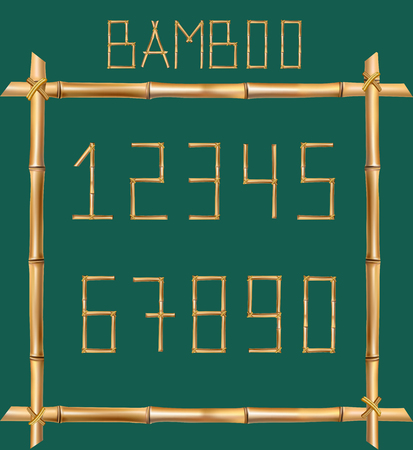Introduction to Panchang: The Heartbeat of Indian Timekeeping
In the vibrant tapestry of Indian culture, time is not just a linear path but a cyclical rhythm that weaves together the celestial and the earthly. At the core of this understanding lies the Panchang, an ancient almanac revered in every Indian household. Rooted deeply in Vedic traditions, the Panchang serves as both a spiritual compass and a practical guide for daily living. It holds immense significance in our lives—from determining auspicious timings for rituals and festivals to guiding personal decisions and agricultural activities. The Panchang is meticulously structured around five key elements: Tithi (lunar day), Vara (weekday), Nakshatra (constellation), Yoga (auspicious period), and Karana (half-day). Each element reflects a unique aspect of cosmic influence, collectively shaping our experiences and choices. Understanding these five elements is not merely about tradition; it is about aligning oneself with the cosmic order and embracing the deeper wisdom that has guided generations. In modern India, where tradition meets innovation, the Panchang remains a testament to our enduring connection with time, nature, and spirituality.
2. Tithi: The Lunar Day and Its Spiritual Flow
Tithi, one of the five pillars of Panchang, is the lunar day that marks the subtle shifts in spiritual energy throughout the lunar month. Each Tithi is determined by the angular distance between the Sun and the Moon, and there are thirty Tithis in a lunar month, divided into two Pakshas: Shukla (waxing phase) and Krishna (waning phase). This cyclical rhythm is deeply woven into Indian culture, as every Tithi carries unique qualities that influence our activities, moods, and even destinies.
The Significance of Tithi in Auspicious Timings (Muhurats)
In India, no important event—be it a wedding, housewarming (Griha Pravesh), or starting a new business—commences without consulting the Tithi. Astrologers and priests analyze Tithis to determine Muhurats or auspicious timings, ensuring alignment with cosmic energies for maximum success and harmony. For example, Akshaya Tritiya (the third Tithi of Shukla Paksha in Vaishakha month) is universally regarded as an exceptionally auspicious day for new beginnings and investments.
Classification of Tithis
| Tithi Name | Panchang Category | Associated Activities |
|---|---|---|
| Pratipada | Shukla/Krishna Paksha | Starting journeys, new ventures |
| Panchami | Both Pakshas | Pujas to remove obstacles |
| Dashami | Both Pakshas | Seeking forgiveness, spiritual cleansing |
| Purnima/Amavasya | Full/New Moon Days | Ancestral rituals, major festivals |
Tithi’s Role in Festivals, Pujas, and Personal Milestones
The timing of major Indian festivals like Diwali, Holi, Janmashtami, and Maha Shivratri is determined by specific Tithis. For instance, Diwali falls on Amavasya (new moon), while Raksha Bandhan occurs on Purnima (full moon). Similarly, family pujas—such as Satyanarayan Katha or Ganesh Chaturthi—are performed according to auspicious Tithis for enhanced spiritual benefits. Even personal milestones like birthdays (Janma Tithi), anniversaries, and baby naming ceremonies are celebrated based on one’s birth Tithi rather than just the Gregorian date.
Everyday Relevance of Tithi in Indian Life
The awareness of Tithi is still vibrant across India. Many people check today’s Tithi through calendars or apps before making key decisions or performing daily rituals. This ongoing connection to lunar rhythms nurtures a sense of belonging with nature and tradition—a gentle reminder that our lives are part of a greater cosmic order.

3. Vara: The Power of the Weekdays
In the Panchang, each day of the week, known as Vara or Vaar, holds a unique energy and significance shaped by its presiding deity. Understanding these seven Vaaras is essential for many Indians when planning auspicious events, rituals, and even everyday activities. Each Vara is governed by a specific celestial body and deity: Sunday (Ravivaar) by Surya (the Sun), Monday (Somvaar) by Chandra (the Moon), Tuesday (Mangalvaar) by Mangal (Mars), Wednesday (Budhvaar) by Budh (Mercury), Thursday (Guruvaar) by Guru/Brihaspati (Jupiter), Friday (Shukravaar) by Shukra (Venus), and Saturday (Shanivaar) by Shani (Saturn). Traditional observances often include special prayers, fasting, or offerings dedicated to the days deity. For example, on Mondays, devotees of Lord Shiva often observe fasts seeking his blessings for peace and prosperity, while Saturdays are marked by rituals to appease Lord Shani and mitigate malefic planetary effects. Regional customs further enrich these practices; in South India, Thursdays are considered sacred for worshipping Guru Bhagavan, whereas in Maharashtra, Tuesdays see devotees thronging Hanuman temples. These weekday traditions reflect not just religious devotion but also the deep-rooted belief in cosmic rhythms guiding daily life across India.
4. Nakshatra: The Celestial Constellations Guiding Destiny
Within the intricate framework of the Panchang, Nakshatras—also known as lunar constellations—hold a special place in Indian astrology. They are far more than celestial markers; they are believed to influence an individual’s character, emotional responses, and even critical life events. Let us decode how these cosmic clusters shape destinies and guide everyday decisions in Bharat.
What Are Nakshatras?
Nakshatras are 27 unique constellations along the Moon’s path, each covering 13°20 of the zodiac. Every Nakshatra carries its own mythological story, ruling deity, symbolism, and energy signature. The Moon’s position at your time of birth determines your Janma Nakshatra—an essential pillar in your astrological profile.
The Impact on Character and Compatibility
Your birth Nakshatra weaves together the threads of your personality—your strengths, challenges, and emotional temperament. For instance, someone born under Ashwini is often dynamic and pioneering, while a Rohini native may be nurturing and creative. This insight not only helps with self-awareness but also guides parents in choosing auspicious names and paths for their children.
Nakshatra Matching in Marriage
In India, matching Nakshatras is integral to marriage compatibility checks—popularly known as “Kundali Milan.” The process analyses factors like mental compatibility (Gana), health (Nadi), and prosperity (Bhakoot) between potential partners. Here’s a simple table summarising key compatibility points:
| Aspect | Nakshatra Role |
|---|---|
| Gana (Nature) | Determines temperament match |
| Nadi (Health) | Avoids hereditary issues |
| Bhakoot (Prosperity) | Forecasts financial & family harmony |
| Yoni (Physical affinity) | Checks basic attraction levels |
Auspicious Timings for New Beginnings
Nakshatras are also crucial for muhurta selection—the process of picking auspicious dates for weddings, housewarmings, or starting new ventures. Certain Nakshatras like Pushya, Rohini, and Uttara Phalguni are preferred for positive outcomes, while others are traditionally avoided due to challenging energies.
The Emotional Connect with Culture
For countless families across India—from Mumbai to Chennai, Kolkata to Lucknow—the wisdom of Nakshatras offers daily guidance. Whether naming a newborn after their star or timing a pooja according to the moon’s position, these ancient constellations remain closely woven into our social fabric—reminding us that destiny is written not just in the stars above but in the mindful choices we make below.
5. Yoga: The Cosmic Union of Energies
Among the Panchangs five elements, Yoga holds a unique place as it represents the cosmic synergy of energies that influence the vibrational quality of each day. In Indian tradition, there are 27 Yogas, each calculated by the sum of the longitudes of the Sun and Moon. This calculation is not merely astronomical; it is deeply spiritual, reflecting the ever-changing interplay between divine masculine and feminine forces in our universe.
The Spiritual Significance of Yoga
Every Yoga carries its own unique spiritual meaning and energy imprint. For instance, Vishkambha Yoga is believed to bring obstacles but also opportunities for inner growth, while Siddhi Yoga is considered highly auspicious, often chosen for commencing important life events like marriages or business ventures in India. These beliefs stem from centuries-old wisdom passed down through generations, and they continue to shape the way many Indians approach their daily lives and major decisions.
How Yogas Influence Daily Life in India
Many families consult the daily Panchang to understand which Yoga is prevailing, using this knowledge to plan ceremonies, journeys, or even routine work. The presence of a positive Yoga can infuse a sense of optimism and collective energy, while a challenging Yoga may inspire self-reflection and caution. This respect for cosmic timing is woven into our cultural fabric—from temples performing special rituals during particular Yogas to individuals choosing when to begin new endeavors based on the days energetic quality.
A Deep Dive into Notable Yogas
Yogas like Dhriti (steadfastness), Shubha (auspiciousness), and Vyatipata (sudden adversity) are just a few examples of how nuanced these influences can be. Each Yoga not only shapes external events but also offers an invitation for internal alignment—encouraging us to attune our thoughts and actions with the universe’s rhythm. By understanding the essence of each Yoga, we empower ourselves to make more conscious choices, transforming ordinary moments into opportunities for growth and harmony.
This deep connection between cosmic energies and daily life exemplifies how Indias ancient wisdom continues to guide modern living, reminding us that we are always part of something greater—a dance of energies unfolding with every sunrise.
6. Karana: The Building Blocks of Auspicious Deeds
Among the five key elements of the Panchang, Karana holds a unique place as the subtle divider of time, shaping the quality and outcome of our everyday actions. In Indian tradition, every important task—be it planning a business venture in Mumbai, embarking on a journey from Delhi, or performing a family ritual in Chennai—begins with consulting the Panchang for the right Karana. But what exactly are Karanas and why do they matter so much?
Understanding Karanas
Karana is essentially half of a Tithi (lunar day), and there are 11 types in total, such as Bava, Balava, Kaulava, and Vishti (Bhadra). Each one brings its own energy and suitability for certain activities. For instance, while Karanas like Bava and Balava are considered auspicious for starting new ventures or travelling, Vishti (Bhadra) is generally avoided for any significant task due to its challenging vibrations. It’s this nuanced understanding that makes Karanas so vital in daily decision-making across Indian homes.
The Calculation of Karanas
In practical terms, each lunar day is divided into two Karanas—one in the first half and another in the second. There are four fixed (sthira) Karanas and seven recurring (chara) ones. Their sequence repeats in every lunar month except for the last four that always occur at the end of each fortnight. This cyclical rhythm, calculated by traditional astrologers using ancient methods or modern Panchang apps, ensures that every region—from Kolkata to Kochi—has access to accurate Karana timings.
The Cultural Significance
The wisdom of matching activities with the right Karana runs deep within Indian culture. Elders will often remind you not to sign an important contract or start a puja during Vishti Karana, echoing beliefs passed down through generations. Even today, wedding dates, housewarmings (Griha Pravesh), and business inaugurations are planned after checking if the prevailing Karana is favourable. This practice isn’t just about tradition—it’s about aligning our actions with cosmic rhythms for better outcomes and inner harmony.
Ultimately, Karana serves as a bridge between cosmic timing and human action. By respecting these time blocks, we honour not only our heritage but also give ourselves the best chance for success—whether it’s a new job in Bengaluru or a family function in Jaipur. In this way, understanding and applying the knowledge of Karanas becomes an act of personal growth deeply rooted in India’s spiritual wisdom.
7. The Living Relevance of Panchang in Modern Indian Life
In today’s rapidly evolving India, the Panchang’s five key elements—Tithi, Vara, Nakshatra, Yoga, and Karana—remain deeply woven into the fabric of daily life. Despite urbanization and global influences, many families across cities and villages still consult the Panchang before making important decisions. Whether planning a wedding, starting a business, or even purchasing property, the auspicious timings marked by these elements guide countless choices.
Personal Growth and Mindful Living
The Panchang is not just about rituals; it also inspires individual reflection and growth. For instance, understanding one’s Nakshatra can foster self-awareness, helping people align their actions with cosmic rhythms. Many young professionals and students look to Tithi and Vara for setting intentions on days believed to enhance focus or creativity. This blend of ancient wisdom with contemporary aspirations makes spirituality accessible and practical in everyday routines.
Cultural Unity Amid Diversity
India’s immense cultural diversity finds unity through shared observance of Panchang-based festivals and traditions. Across languages and regions—from Tamil Nadu to Punjab—communities celebrate events like Diwali or Pongal at times chosen by these five elements. The collective participation strengthens bonds, reminding everyone of their common heritage while honoring unique customs.
Blending Tradition with Modern Choices
Modern Indians are adept at harmonizing tradition with technology. Digital Panchangs are now available as apps, making the five elements instantly accessible on smartphones. Urban youth may check a Nakshatra app before attending interviews or schedule important meetings based on favorable Yogas. This seamless integration illustrates how age-old practices continue to evolve without losing their essence.
In every sphere—personal decision-making, spiritual growth, or national celebrations—the Panchang’s five pillars serve as a gentle compass. They offer comfort amid uncertainty, nurture resilience during change, and keep alive an enduring sense of connection to one’s roots. In this way, the Panchang remains not only relevant but vital to the heartbeat of modern Indian life.

